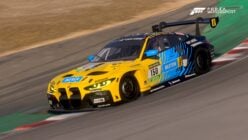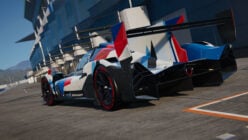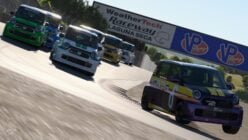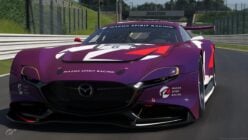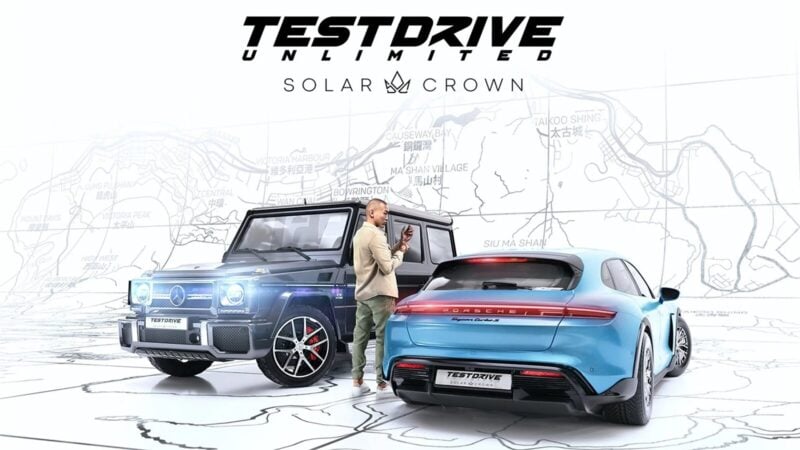
It’s been a bit over 13 years since the last game in the Test Drive Unlimited series, TDU2, and while that had something of a mixed reception it did gain a niche following. As such, the third game in the series has been one much anticipated on GTPlanet.
We’ve had to wait even longer for it too, as nearly a third of the interval has come between KT Racing and Nacon revealed that Test Drive Unlimited Solar Crown was in development and the launch this week. That four-year stretch has been made to feel yet longer by several false dawns, but it is finally here.
Of course in that time, the open-world racer genre has been moved on quite a bit by none other than Microsoft and the Forza Horizon series. All five games in that series have appeared since the last TDU and each has set a new bar — to say nothing of all three-ish entries in Ubisoft’s series The Crew.
Where TDUSC will be hoping to differentiate itself is in its large and more realistic playing area — an almost 1:1 recreation of Hong Kong Island — and its “lifestyle” theme that comprises a carefully curated list of prestige and sports cars, and clans of drivers distinguished by their fashions.
We’ve been playing the title through a preview code provided by Nacon on PlayStation 5 in order to find out if it’s a Solar Crown or a Solar Clown…
Test Drive Unlimited Solar Crown arrives Thursday, September 12, on PC, PlayStation 5, and Xbox Series. Silver and Gold Edition players get early access from Tuesday September 10 and Thursday September 5 respectively.
Table of Contents
- Content and Value For Money
- Online Features
- Driving Physics and Handling
- Graphics
- Sound Design
- Our Verdict
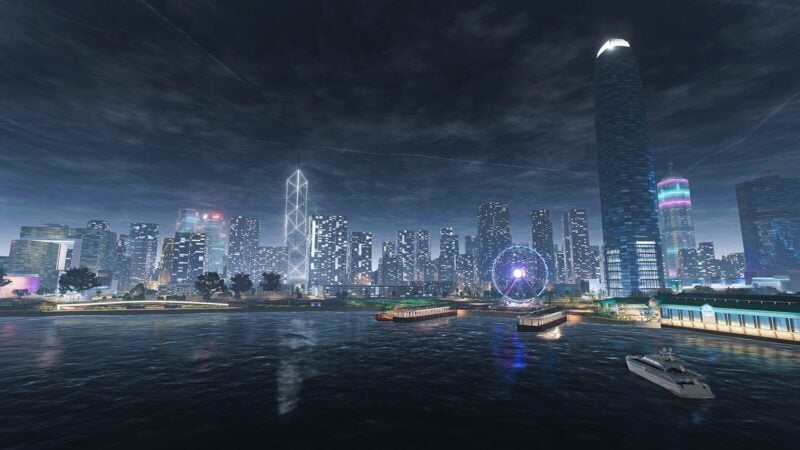
Content and Value For Money
The USP of Solar Crown is its “1:1” recreation of Hong Kong Island and its clan vs. clan storyline that will see you ascend the ranks of the eponymous street racing contest for your chosen tribe.
That means that, as well as knowing what you’re getting in location terms, there’s a great deal more focus on the car choices for the game. Anything not fitting into the theme of performance and prestige cars (on and off the road) doesn’t make the cut, giving a smaller but more focused feel to the car list.
Car Selection
And yes, it’s small by comparison to most other titles out there. We actually don’t have a comprehensive car list yet, but it comes in at roughly 100 cars at launch.
That does have some benefits. It’s a pretty tight list with nothing really weird or with niche uses, and determined by function rather than what a particular car brand’s licensing department is keen to get featured.
You’ll also not be switching cars all that often, or dealing with a bloated garage you have to scroll through in order to find the car you want. Nonetheless, it is objectively a small list compared to some rival titles with 5-8x that.
One quibble we have though is that we’ve seen them all before. As far as I can tell, there isn’t a single vehicle that is making its gaming debut in TDUSC, and even the very newest ones — which are in a minority — are already in two or three other titles. That gives quite the stale feeling for a title which is getting ready to launch.
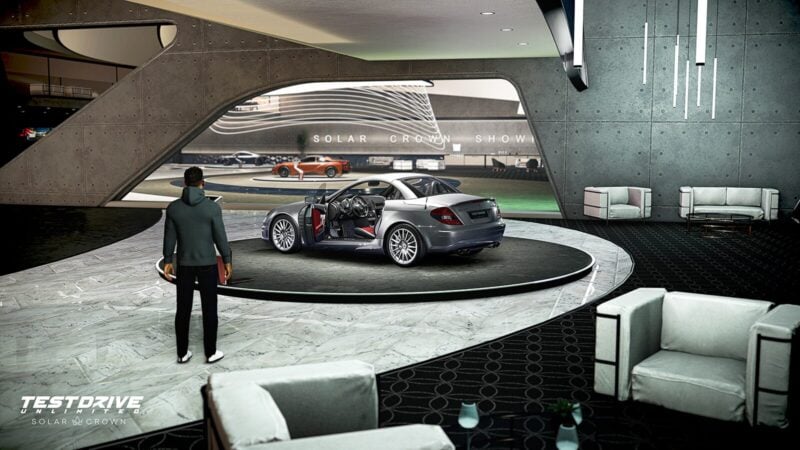
Locations
Of course the game centers on a single location and builds its race tracks on top of that, so in terms of tracks it has both more and less than traditional racing titles — in the same manner as Forza Horizon does.
In size terms, Hong Kong Island is much smaller than TDU’s previous locations, but at somewhere between the size of Forza Horizon 4’s “UK” and Forza Horizon 5’s “Mexico” it doesn’t feel particularly compact — although we did traverse north-to-south surprisingly quickly.
The fact that there’s fast travel points (like gas stations, and any building with an interior) certainly hints that the map is of sufficient size that players might not want to be slogging from one end to the other. There’s dynamic time of day and weather across the whole map too.
Given the open location, the number of tracks therefore is only limited by how many KT wants to put on the map and it has to be said that there’s plenty to do even in the early stages of the game. In total there’s something like 200 races spread across the map.
However we did begin to encounter some reverse tracks early on, notably in the Sharps entry race which mirrored a time trial at the same location. The majority of the races at least in the opened stages are tiny too, at two laps or — for sprints — about 3-4 minutes.
Away from racing, Solar Crown also has a number of interior spaces. Some, such as dealerships and workshops, are largely clones of one another, but there’s also unique locations like the Solar Hotel and the two clan HQs.
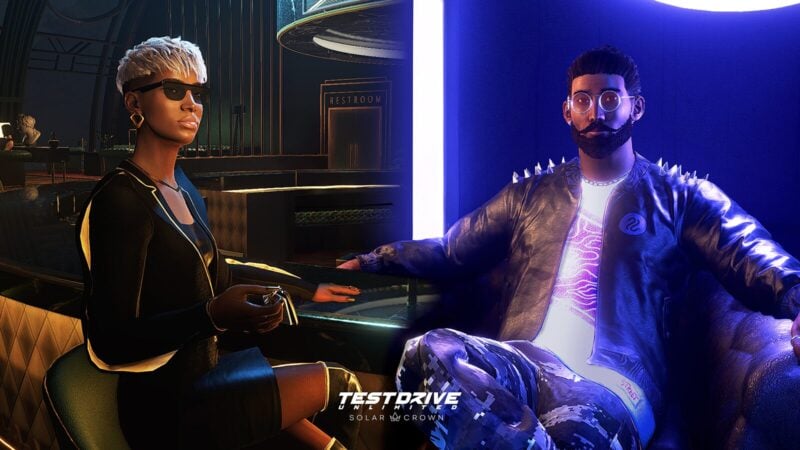
Game Progression
There’s a few things going on all at once with game progression, as you build up your bank balance to be able to afford cars, your player level in order to be allowed to buy them and access higher level tuning parts, and your clan level to access unique cosmetic items.
All of these come by way of simply doing races and collecting “radiant” rewards — Solar Coin and points of both types — dotted around the map, as well as road and area discovery. The good news is that there’s no separate car levelling system, but you do need to progress quite far to start getting interesting vehicles and upgrade parts.
That does actually encourage you to remain in one vehicle for a while, but there are a number of events that only allow certain cars, car types, or Performance Rating (PR) values to take part. Handily, cash isn’t exactly hard to come by, but it does feel like everything’s had a “0” added to the end of its value; maybe that reflects the approximate HKD to EUR/USD/GBP exchange rate though.
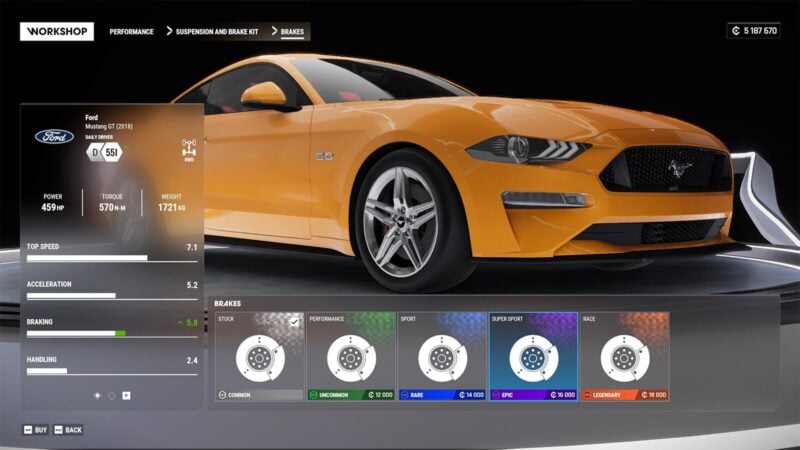
Car Customization
One of the neatest things about Solar Crown’s cars is the fact you can customize them right from the dealership by ticking options boxes. The exterior paint, interior trim, and wheels are all selectable, with the “rarer” options available for a slightly higher cost. We’re not sure quite how a rarity system applies to things you can just pick, but there it is.
Vehicle tuning is present too, if largely the same as what we’ve seen before across many games. That’s not exactly a criticism — there’s not many different ways to execute this — but seeing the same kinds of icons for engine, air filter, brakes, tires, gearbox, and the same incremental gains from a one-click application to your car is perhaps getting old now.
Other car customization is also available, with cosmetic mods and a livery editor. We’ve not really had the time or opportunity to explore this fully but it is broadly in line with other titles — even if more outrageous body modification doesn’t appear to be available here.
Character Customization
You can also customize your player character. It’s perhaps a little disappointing that there’s only a few male and female avatars of differing races to select, but you can adjust several facial parameters to approximate whatever you want.
After that it’s all about the drip, once you’ve reach a high enough level to buy clothes. There’s a pretty wide range of items available, some of which you can unlock from ranking up within your chosen clan.
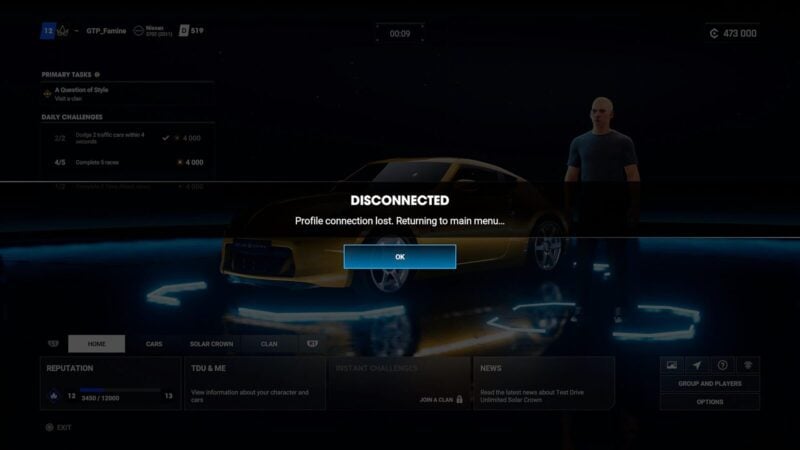
Online Features
Given that TDUSC is described as a “massively open online racing game (MOOR)”, the actual online portion of the game is the hardest to rate.
That’s partly because there isn’t one: it’s all online. Every race in the game will either be populated by other players from around the world (we don’t know if there’s any geographical restrictions) on your chosen platform (crossplay is not, to our knowledge, enabled) or, if enough cannot be found, AI players at an appropriate skill level.
Ultimately that means that the online experience is the game experience. While there are no unique races that are exclusively online right now, there will be some live events cycling through when the game launches fully. Of course we’ve not had chance to play any, but from the descriptions given they’ll simply use the same races — circuit and sprint — to host dedicated player vs player challenges in some slightly different game modes.
One thing we can’t find any trace of yet is any form of skill-based ranking or matchmaking and we’re also not sure if there’s any anti-griefing mechanisms at all, but we didn’t experience any when using the AI to help us round corners so we’re not expecting much.
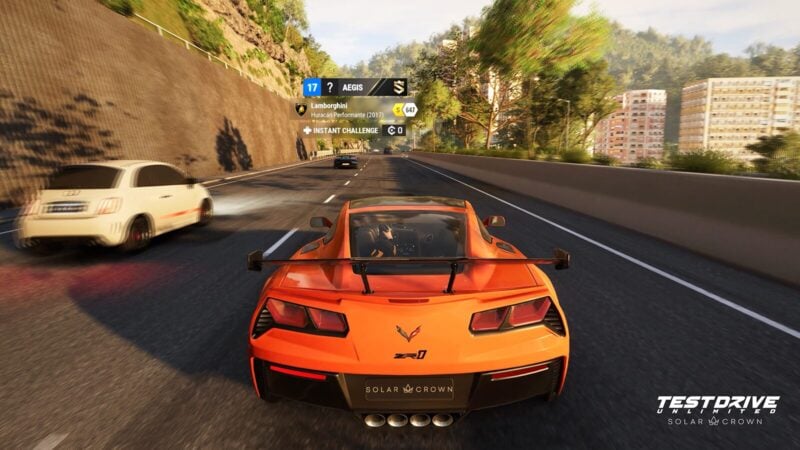
Driving Physics and Handling
How TDUSC drives is… well, let’s say “idiosyncratic”. If you’re expecting a simulation experience, considering that KT Racing used to make the official WRC title, lower your expectations. No, a little lower than that. Keep going.
I honestly don’t know what they were going for here, and I’ll caveat it with the fact that aside from the first introduction “race” with Vivian I’ve not driven anything particularly powerful yet. That’s not for want of trying, but due to the game being offline for about half of the three-day review window… including right now.
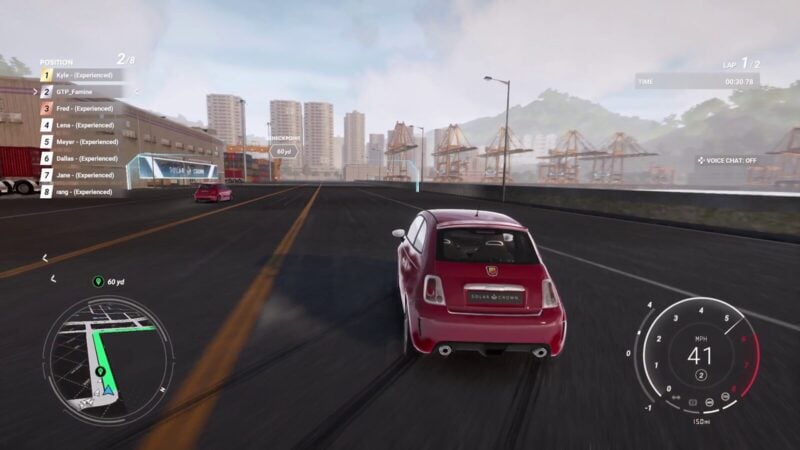
Vehicle Dynamics
All of my early races could easily be won without any significant braking at all in the Nissan 370Z. Braking, it turns out, generates all of the understeer in the universe — and that’s not just me mashing the L2 trigger into its socket, because the AI racers also understeer and so do the NPC cars: a Range Rover coming towards me while I was parked just went straight off the road.
Instead, lifting off and turning scrubs all the speed you could want in almost all but the sharpest, heaviest-braking corners, and encouraging the rear round with the handbrake is pretty much all you need. Even with front-wheel drive cars (of which there are thankfully few) though you may need to lift off earlier.
Contacting destructible environmental objects significantly impacts your forward momentum, but the indestructible ones don’t appear to. That means that sliding off the outside of the track and glancing a building side-on is better for momentum than taking the corner and clipping a fence on the inside. Slamming into opponents also seems faster and entirely unpunished at least when it comes to the AI.
While the AI racers also struggle with understeer, they appear to running on their own, separate physics and with quite a bit of rubber-banding too. We found a number of later races populated by cars nowhere close to the performance rating limit but keeping up without issue, and in so many races the front one or two cars just vanish up the road (literally; they’re barely visible unless within 1.5 seconds).
The dirt physics are just about the same, even if you fit offroad tires (as a side note, why is that necessary on a literal offroad buggy?). If you attempt to go fully off-road, you’ll have a bad time no matter what you’re driving; progress through about ten car-lengths of foliage in the 370Z took over a minute from standstill, while the 4WD buggy was a little more effective but span its wheels the whole time.
And then there’s the jump physics. You actually get points for jumping cars, but everything goes quite weird when you do. Even a little air on a highway bump got the 370Z confused — but not as much as the third-person camera, which violently slewed around — while one of the AI buggies actually flipped itself after a straight landing from a straight jump on a dirt track in a race.
Steering Wheels and Force Feedback
There’s a wide range of supported wheels for the game from all of the major manufacturers (except Hori), naturally depending on what platform you use, but with the very short window of opportunity I haven’t yet had a chance to test any out. Not that I feel the need to particularly, given the above notes about physics.
In terms of force feedback on the controller though, there is barely any of which to speak. The DualSense adaptive triggers are supported — but there’s no ABS sensation on the brakes — and no matter what you crash through or into, or drive over, there’s little indication that you’ve done it.
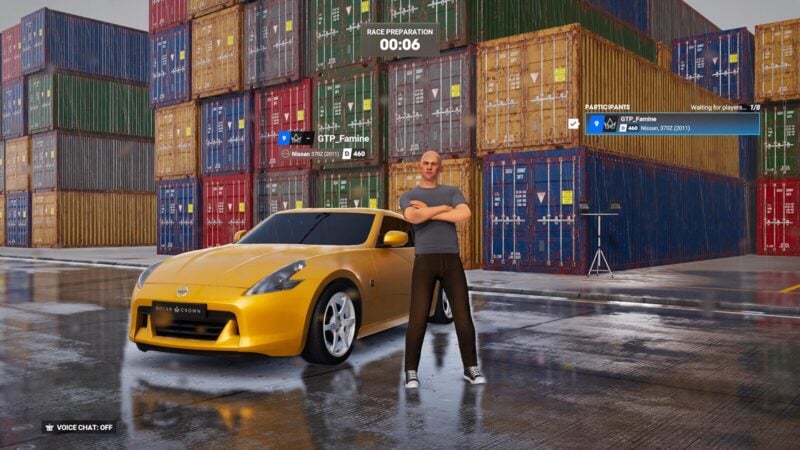
Graphics
By some margin this is the biggest gripe I have with Solar Crown overall, as it’s just as disappointing as it is baffling. There are moments where the game can be beautiful, but they are extremely rare exceptions and pretty much exclusively indoors.
I’m going to get the elephant in the room out of the way first. This game has two modes on console: Quality Mode at 1440p30, and Performance Mode at 1080p60. On ninth-generation consoles, which have racing games that are three years old running at 4K60 already.
And it’s not like that’s a guaranteed 60fps either. We got some huge drops, to what we’d guess at 45fps quite often and down below that still on some occasions. Despite this distinctly last-gen performance, our PS5 ran really rather warm during gameplay too.
Lighting
This is the single largest issue with the graphics. Every car I tried, and every AI racer’s car, glows. I’ve not seen this on any of the PC demo builds, or the 4K official screenshots from PC, but it is everywhere in this PS5 version.
It’s difficult to adequately convey this effect in words, but it’s like the vehicle has a white aura, as if being highlighted as your target in an Assassin’s Creed game. I wouldn’t even call it overblown reflection effects; it’s like applying an outer glow in Photoshop.
The glow is partly affected by shadows, but sometimes it’s most obvious in the deepest shadow — like below an elevated road section, at night — when the car should be entirely dark.
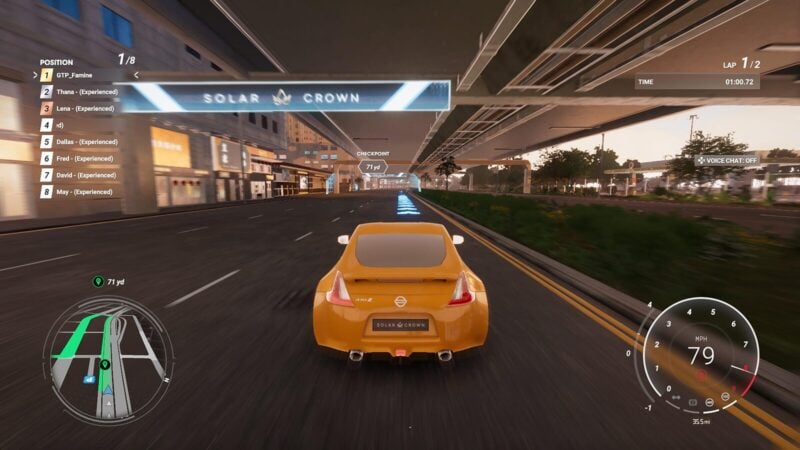
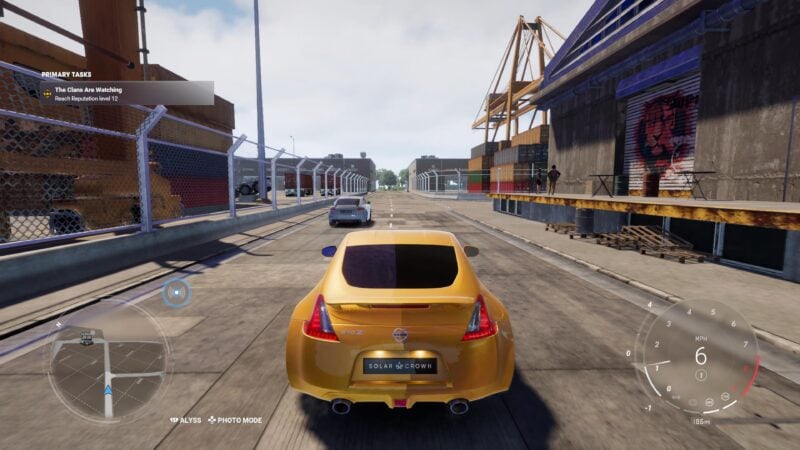
In fact shadows too have issues, spreading out across a vehicle in the most bizarre way. I’ve seen the right of my car in shadow and the left not while parked clearly entirely in the shadow of a building. That effect has also been present in reflections, as one side of the roof or hood reflects neon signs but the other doesn’t.
Random patches of environment will also have this glow, regardless of what’s above them or not. Again, the effect is like it’s an object you need to interact with in a first-person adventure game.
Car Models
Originally I felt that the car models were decent if not spectacular. They’re absolutely not at the levels of detail you’ll see the best and most recent vehicles from GT and Forza title updates, but mostly manage to be okay.
On closer examination though, even in showrooms some of the cars don’t look quite right. It’s actually really tricky to put a finger on why: my starter Nissan 370Z doesn’t overtly have anything wrong with it, but the Audi Q7 and Porsche Cayenne in the Offroad dealer showroom look off. They also appear rather under-wheeled, but the proportions don’t seem quite right either — like the original captures are a generation or two out of date.
There’s also some really, really poor quality LOD models in races, with even middle-distance cars dropping — no word of exaggeration — to the level of static background cars in a PS3-era title.
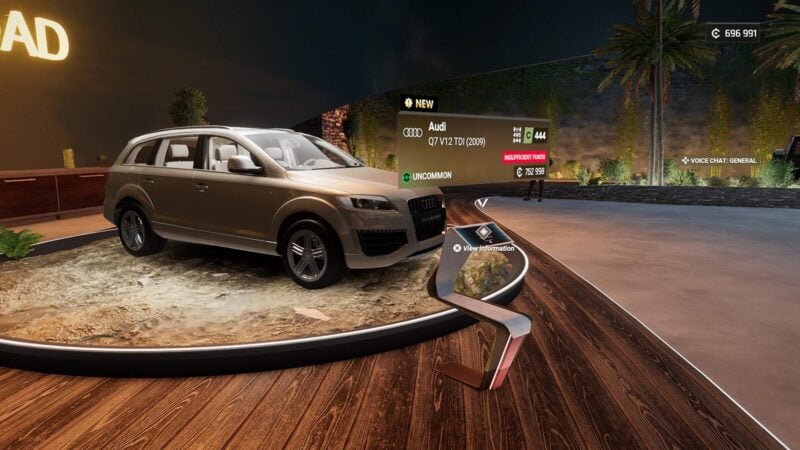
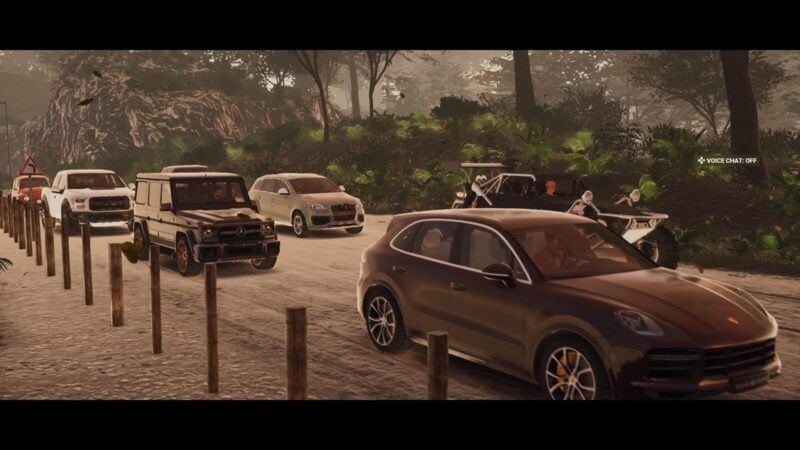
External Environment
If you stop a while and take in the world around you (from cockpit camera, so as not to be distracted by the car glow), Hong Kong Island actually looks pretty excellent.
From the cityscape sections to the rural, mountainous heart of the island, and the seaside areas, it all looks very nice indeed. It’s rich and varied, packed with unique buildings and areas like parks and building sites, and I don’t actually recall there being a single boring few square meters; there always seems to be something going on somewhere.
In motion it’s a different story, filled with screen tearing and pop-in. Distant buildings shimmer as their character lighting loads in and out of view, nearby architecture loads in its highest detail models barely 50 feet ahead, having too many cars around you (three) while tackling a corner in a race slashes the frame-rate… it’s all rather unsatisfying.
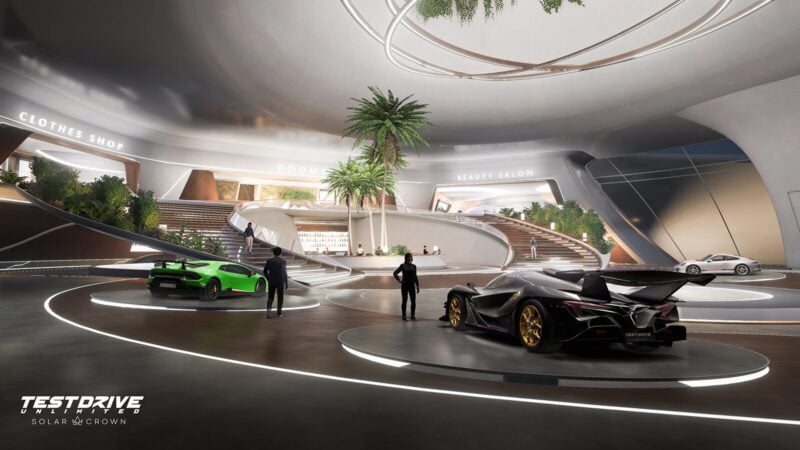
Internal Environment
You’ll be heading indoors quite a bit in Solar Crown, walking around dealerships, workshops, and Clan headquarters — not to mention the Solar Hotel itself — and these areas are by far the best in the game. That said, they don’t have to move.
Nonetheless it’s clear that a lot of time has been spent getting them to feel just right and they probably do more than anything else in the game to convey the overall vibe that KT Racing is swinging for.
The NPC character models are a step or two behind the best we’ve seen on current-gen consoles, and drawn from the deepest trope wells around, but they do the job. Curiously there’s no way we found to slip into third-person view when walking around though.
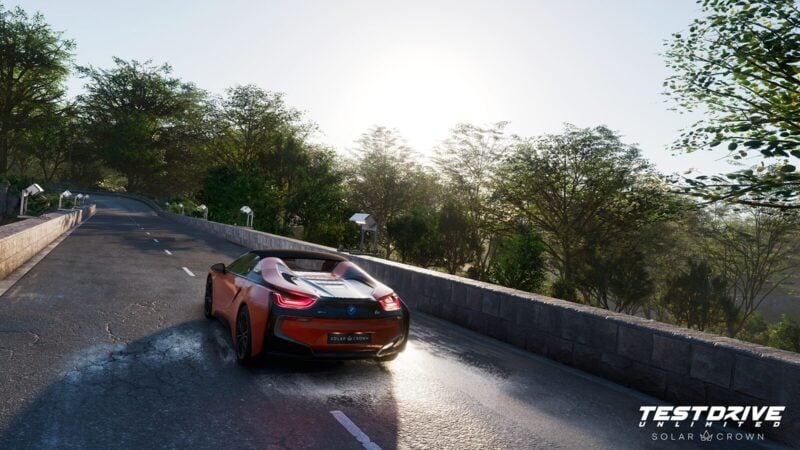
Sound Design
In general terms, Solar Crown does a solid job in terms of the audio experience, with the cars in particular being pretty faithfully simulated — though the standard sound mix causes a lot of environmental sounds to be missed.
Engine Sounds
We’ve tried a range of cars in a number of different environments and through both standard TV speakers and the Sony Pulse 3D headset. For the most part it’s a good effort and generally authentic.
You can clearly hear engine and exhaust differences, and things like forced induction, even if it isn’t the definitive word in a full-spectrum aural experience. Vehicle modifications make the expected changes to the soundtrack of each car.
There’s definitely a lack of overall depth to the sound, and we found the reverberation effects of enclosed environments to be little bit of a mixed bag. Generally though it’s decent even if it could be better.
Environment Sounds
Hong Kong is not a quiet place, but on the standard settings and on the move you can’t hear a thing besides your car and any others you may be racing.
That’s not by way of absence of environmental sound, just that they’re barely audible in the standard sound mix. If you can find a quiet spot with no traffic and turn your engine off, there is actually more going on than you may realize.
I wouldn’t necessarily say there’s a lot of it — some crowds during the races wouldn’t go amiss, considering that you’re supposed to be gaining “reputation” by impressing spectators — but it’s not quite the sterile environment you might otherwise think.
One thing that is absent from the sounds though is the sensation that you’re driving anywhere in particular. If there’s some kind of sample in there for dirt kicking up under your car on offroad sections — or even water splashing up on the frequently wet road — I can’t hear it. Smashing through barriers and light poles produces little by way of aural indication either, nor bottoming out a car after a jump.
Other Sounds
As always, in-game music is to personal taste, and I’m not going to mark a game up or down on the basis of having music I like or don’t.
The fact is that there are a few radio stations to which you can listen, or you can turn the radio off entirely. It seems that races can force music on unless you go through the slightly complicated process of turning it back off or just whack race music to zero in the settings. You’ll find a track list on Spotify, and you’ll see it’s quite lengthy when all added together!
There’s also quite a few speaking parts for non-player characters (the player character doesn’t speak at all), and while a little tropey we’ve got no complaints about the voice-overs. Although perhaps not having the same voice speaking the same line at every dealership across the island every time you buy a car would be nice.
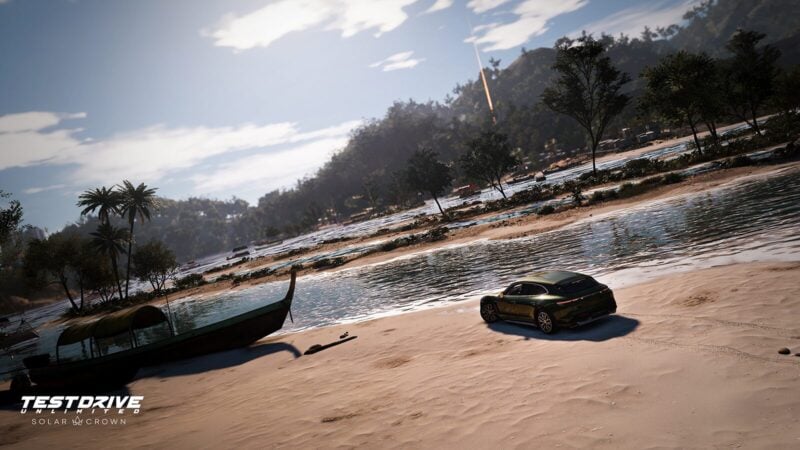
Our Verdict
It’s difficult to know where to start with this. On the face of it, TDUSC has all the makings of something that should be very enjoyable for years to come: a largely realistic game environment, a thematic car list directed by necessity and not the whims of licensees or eclectic individuals who decide them, and something approaching a storyline even if it’s not exactly stretching the genre.
When not moving through it, Hong Kong does look and (with the radio off and the sound mix refocused on environment) sound pretty good, and the cars also sound solid. The interiors of various locations you can enter — dealerships, Clan HQs, workshops — have a lot of attention to detail, though the trope characters populating them aren’t quite at the level of Baldur’s Gate 3.
But that’s pretty much it. When you do get moving, you’re more distracted by the pop-in, draw distances, screen tearing, and not exactly infrequent frame-rate drops — in 1080p60 “Performance Mode” on a ninth-gen console! That’s if you can take your eyes off the weird shine on every car, and inconsistent lighting.
And that’s to say nothing of the driving itself, where understeer is seemingly the only actual handling characteristic of everything, letting off the power is a more effective than actually braking, driving through destructible objects is more harmful than sideswiping buildings, and the AI appears to have its own rules entirely.
For a lot of people, the always-online, always-multiplayer aspect of the game (requiring a Nacon account, of course) will be an instant no deal — and I’m tempted to take a point off for a full-price game that also requires PS Plus/Xbox Live — but it’s not like the rest of the game is good enough that they’ll be missing out on much. Oh and that Nacon account requirement also means (at least on PS5), you can’t suspend and resume the game as you need to go back to the main menu to authenticate every time…
KT Racing has already published its plans for the year to come, with free expansions and monetized game passes, but how addressing how the game looks and drives are considerably greater issues than adding new environments, new story forks, and an in-game currency gambling mechanic.
With this offering, Microsoft can happily keep supporting Forza Horizon 5 and give Playground Games a couple of extra years to work on 6 without worry.
Test Drive Unlimited Solar Crown
Learn more about how our rating system works.

See more articles on Review and Test Drive Unlimited Solar Crown.
